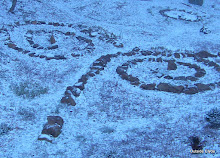
A garden was planted in the wild. It was the plants that mattered more than the idea of "garden" and a wildling was born. It's not quite civilized, but you can see that it has the same form in many respects as a garden.

Every so often the wildling can use a good scrubbing and a comb run through its hair. You want to try and teach it some manners, to see if it can become a full member of its tribe.

Temporarily it may be possible. For less time than a civilized garden perhaps, but they too have the wildling in their genes.

The Bloodroot, Sanguinaria canadensis tries to get more garden worthy in the wildling, massing itself for maximum effect. In the wild forest they are more often solitary.

Dicentra canadensis, Squirrel Corn is a relative of the common garden variety Bleeding Heart, Dicentra spectabilis.


Dicentra cucullaria, Dutchman's Breeches is subtly different. A third native, Dicentra eximia might be found here yet.

A Tulip opened today.

It appears quite comfortable in this setting, like how it used to be for Tulips.






8 comments:
Just dropping in to say Hi!, and I'm glad to see that someone had the good sense to publish your writing.
You should stop by more often Cheryl.
Now I just need to work on getting published some more.
Your last thought, about the tulips... interesting. Care to expand on that?
I'd like to second Blackswamp Girl's comment/question. I have a couple of survivor tulips that come up and bloom faithfully in the woods every year. I really don't remember putting any there.
Well Kim and Entangled I was thinking before the Dutch got a hold of Tulips and turned them into what they are today, a spring annual and bold bedding plant, Tulips were native to Turkey and places east and grew wild. Tulips were a wildflower.
Here on the ridge top garden the Tulips are getting back to their roots.
I face the same challenge, and call it "Wintentional"...somewhat wild, and somewhat intentional. Frankly, I'd like to ultimately blend the two seamlessly as possible...like all you notice is more flowers, then slowly you realize a human must have had a hand in it at some point. Frankly, your spot already qualifies...
I like that thought.
(Says the girl who loves her handful of dramatic 'Prinses Irene' and 'Queen of Night' tulips in the late spring garden... but is completely smitten with the cute little species tulips that were planted out everywhere in the front yard last fall.)
I'm with you on the tulips as wildflowers thought, but still trying to understand my huge red hybrid tulip-of-the-woods. I always imagined that tulips were native to mountain meadows and wouldn't be happy in a woodland.
Post a Comment